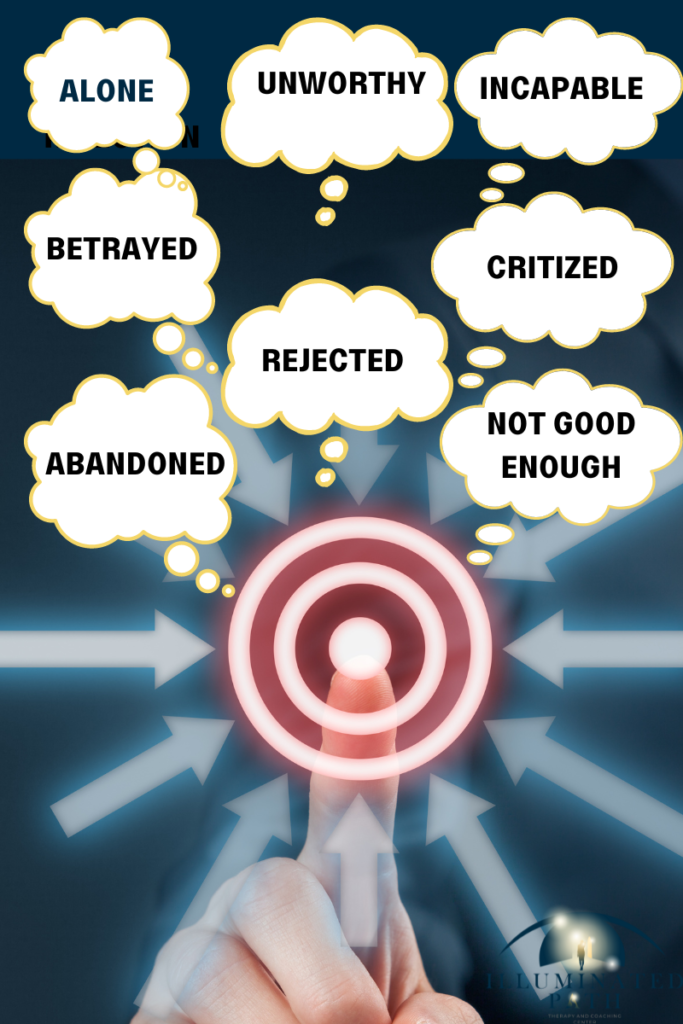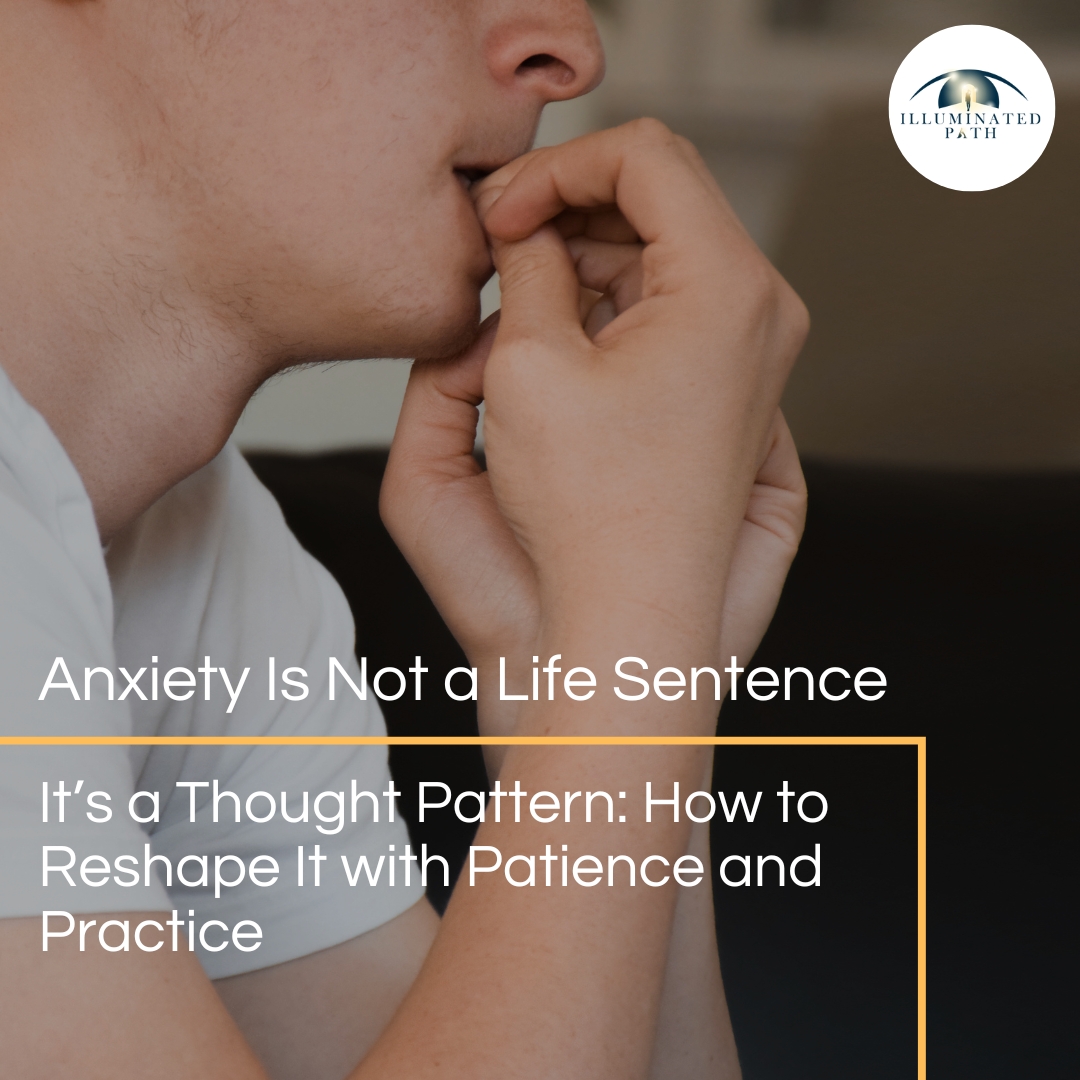We do not accept insurance to safeguard the privacy and confidentiality of all patients.
5 STEPS ON HOW TO MANAGE YOUR TRIGGERS
Your partner says something to you; someone doesn’t do what you expect at work; you read an email, see something on social media or hear a song. Suddenly, a button has been pushed, and you are overcome by intense emotion.
You were okay a moment earlier, but suddenly, seemingly out of nowhere, you are angry, upset, irritable, and irrational. You feel out of control and lash out in unproductive and unhelpful ways, sometimes even damaging to you and the people around you.
You have been triggered! Triggers are events that tend to instantly elicit an intense emotional reaction, often out of proportion to the event itself. After some time passes and we are calm, we may look back and regret what we said and how we acted in this state of high reactivity.

What is Triggering?
Our ability to think clearly and act rationally is seriously impaired when triggered. Most of the time, our neo-cortex, the reasoning part of our brain, monitors our reactions. When triggered, the amygdala hijacks this part of the brain, which regulates the fight/flight response. When danger is sensed, our body releases stress-related hormones increasing our heart rate and blood pressure to give us extra energy, allowing us to attack or flee.
While these responses are beneficial in life-threatening situations, they cause problems in our everyday life. These systems cannot distinguish between emotional threats to our ego and actual threats to our safety. When we get triggered by something someone says or does, our body reacts as if our life was being threatened.
Our triggers are very personal to us. What triggers one person may not trigger someone else at all. Past experiences inform our current triggers. Our brain organizes and stores memory into networks associated with emotional events. Our triggers elicit reactions that seem out of proportion with the incident because the stored memories come flooding in.
When we are triggered, we react uncontrollably with either “fight,” getting defensive, arguing our point, or getting angry; or we move towards “flight” and shut down. Although there are plenty of valid reasons to be upset about the external circumstance presented to us, the intensity of our reaction is often not about this isolated event. It’s about similar experiences in the past, perhaps even in childhood. You don’t have to be at the mercy of your triggers. Learn what your emotional hot buttons are and learn to work through them. Practice these five steps to manage your triggers effectively.
How to Manage Your Triggers
Step1. Know Your Triggers
-
- Become aware of the things that trigger you. Without awareness, your triggers can subconsciously control you. When you become conscious of them, you open up space for possibly making different choices when triggered. Try to understand the deeper feelings that are being triggered and where they come from. Ask yourself: “Why do certain things cause me to react this way? What from my past is being activated?”
-
- Make a list of the things in your life that trigger you. These external events elicit intense emotional reactions seemingly out of proportion to the triggering event. List the actual events and not your interpretation of the event. For example, “I get triggered when Sam disrespects me.” is an interpretation of what Sam apparently does. What’s the actual behavior of Sam that triggers you? “I get triggered when Sam calls me stupid.” Is an actual event.
-
- Once you’ve written down your triggers, go back and write your initial reaction to each of them. The first reaction to a trigger is an impulsive attempt to refute, push away or escape the feeling. Next, we want to try and trace the layers of emotions to get to a core memory or feeling that has been maladaptively stored in our neurocircuitry.
-
- Triggering can be thought of as an onion. The top layer is our very first reaction to the triggering event. The second layer is a deeper, typically more vulnerable feeling. And beneath are several more layers, each with a more profound, less readily accessible emotion. Finally, we come to the core; usually, a wound often tracing all the way back to our childhood. This core wound is so sensitive and painful that we’re desperate to avoid feeling it. This is the emotion that causes our brain to interpret the trigger as life-threatening and initiates the fight/flight response. The core wound drives the whole pattern of getting triggered.
-
- We want to trace how these patterns have recurred throughout our life in other contexts and relationships. We trace this pattern back through time to the earliest memories of having felt this way.
-
- Here is an example of a common trigger: “Sam says all I do is nag and complain.”
| Initial reaction (top layer): | I feel defensive and try to prove he is wrong by attacking him “maybe if you did things right, I wouldn’t have to complain all the time.” |
| 2nd layer | A wave of explosive anger boiling inside me “how can he say that to me”? |
| 3rd layer: | Fear and anxiety. “What if he is right? What if I’m doing something wrong? Maybe I ask for too much.” “What if he leaves me”? |
| 4th layer: | “Maybe there is something wrong with me; I’m just not good enough.” |
| 5th layer: | “This is how I felt as a child; nothing I did was good enough. I felt like I had no right to ask for anything or show that I was upset because if I did, my dad would yell, and my mom would break down. I was afraid they would leave.” |
| Core: | “If I speak up and complain, Sam will leave me, and I’ll be alone. I’m unlovable.” |
-
- Once we know our triggers and how they are deeply encoded in our neurochemistry, we can begin to rewire our brain and train ourselves to respond rather than reacting automatically and impulsively in triggering situations. This gives us space to re-establish control and allows us to make choices on how we want to respond.
Step 2. Name it
-
- The next step is identifying and naming what’s happening in the moment. Notice what is happening in your body when you are in a fight or flight (tension, constricted breathing, heart rate increasing) and recognize these signs of getting triggered. Then say to yourself, “I’m triggered.” The moment you do this, the clear, confident, rational adult part of you will show up and reclaim your power.
-
- Name and own your feelings. Remind yourself that it’s totally normal to feel whatever you’re feeling at that moment. Sad, anger, fear, and jealousy are all normal universal emotions. Denying or ignoring what you feel generally only makes it worse over time. Accept them for what they are without assigning meaning to them and telling yourself stories about what these emotions mean about who you are or who the other person is. This will allow you to feel an emotion without becoming the emotion.
Step 3. Step back and yourself space
-
- Once you know you have been triggered, the next step is to pause and give yourself space and time to re-establish control, so you don’t react and prevent the situation from escalating.
-
- You can say, “I’m feeling reactive and overwhelmed. I need some to get my thoughts together. Can we talk about this in a few hours?” Thisdoes not mean you storm out, and slam the door, to avoid conflict. The purpose of giving yourself this space is to help you get centered and better able to respond to what has triggered you. There needs to be clear communication about when you will return to address the situation.
Step 4. Self-soothe and reset your nervous system
-
- Once you are no longer actively provoked by the trigger, the flight/fight response will gradually subside. You will begin to return to a calmer, more centered internal space. However, you must prevent re-triggering yourself by thinking and ruminating about the situation. Like a hamster on a hamster wheel, your mind replays the same conversation repeatedly in your head. Redirect this cycle by focusing mindfully on something external. Bring your awareness to an external object and describe it in detail. Shifting your focus helps you get out of your head and break the cycle of rumination.
-
- There are many ways to self-soothe. You likely have developed some of your own ways of calming down, perhaps going for a run, a splash of cold water, listening to music, or spending time with a pet.
-
- Techniques that work directly with our body to help us calm down and regain balance, such as deep breathing and physical exercise, are very effective. Other strategies work directly with our thoughts and emotions, such as various forms of self-reflection, journaling, emotional release, meditation, and prayer.
Step 5. Deal with the situation.
-
- Once you have come out of the flight -or -fight triggered state and have returned to a calm inner balance, you can see things clearly and choose to respond effectively and efficiently. You can now assess the situation, get clear on what you want and need, and plan how to communicate those needs best.
Identifying emotional triggers is not an easy skill to master for most people, and it’s not always easy to identify your triggers. If you are unable to close to recognize your triggers and manage them on your own, therapy can help. At Illuminated Path Therapy and Coaching Center, we provide a safe, non-judgmental space for you to identify what triggers you, explore the roots of them, and learn communication skills to respond rather than react in the moment.




